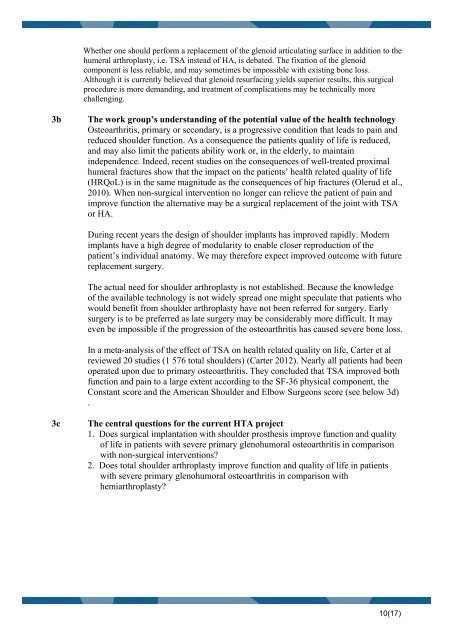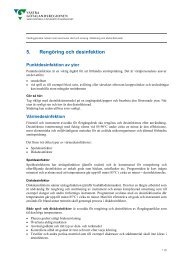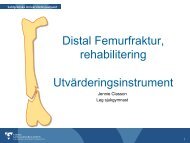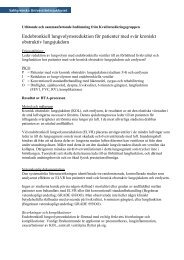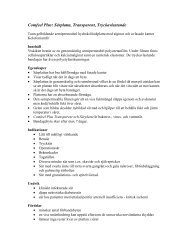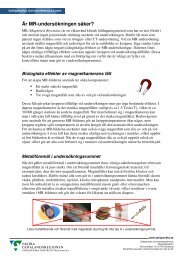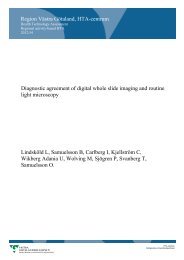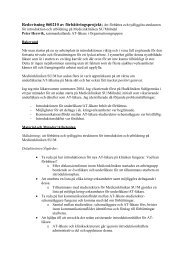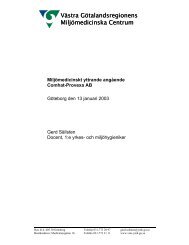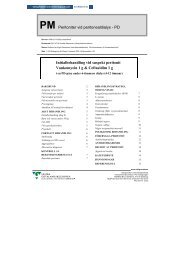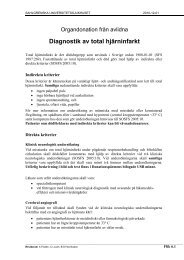HTA - Sahlgrenska Universitetssjukhuset
HTA - Sahlgrenska Universitetssjukhuset
HTA - Sahlgrenska Universitetssjukhuset
You also want an ePaper? Increase the reach of your titles
YUMPU automatically turns print PDFs into web optimized ePapers that Google loves.
Whether one should perform a replacement of the glenoid articulating surface in addition to the<br />
humeral arthroplasty, i.e. TSA instead of HA, is debated. The fixation of the glenoid<br />
component is less reliable, and may sometimes be impossible with existing bone loss.<br />
Although it is currently believed that glenoid resurfacing yields superior results, this surgical<br />
procedure is more demanding, and treatment of complications may be technically more<br />
challenging.<br />
3b The work group’s understanding of the potential value of the health technology<br />
Osteoarthritis, primary or secondary, is a progressive condition that leads to pain and<br />
reduced shoulder function. As a consequence the patients quality of life is reduced,<br />
and may also limit the patients ability work or, in the elderly, to maintain<br />
independence. Indeed, recent studies on the consequences of well-treated proximal<br />
humeral fractures show that the impact on the patients’ health related quality of life<br />
(HRQoL) is in the same magnitude as the consequences of hip fractures (Olerud et al.,<br />
2010). When non-surgical intervention no longer can relieve the patient of pain and<br />
improve function the alternative may be a surgical replacement of the joint with TSA<br />
or HA.<br />
During recent years the design of shoulder implants has improved rapidly. Modern<br />
implants have a high degree of modularity to enable closer reproduction of the<br />
patient’s individual anatomy. We may therefore expect improved outcome with future<br />
replacement surgery.<br />
The actual need for shoulder arthroplasty is not established. Because the knowledge<br />
of the available technology is not widely spread one might speculate that patients who<br />
would benefit from shoulder arthroplasty have not been referred for surgery. Early<br />
surgery is to be preferred as late surgery may be considerably more difficult. It may<br />
even be impossible if the progression of the osteoarthritis has caused severe bone loss.<br />
In a meta-analysis of the effect of TSA on health related quality on life, Carter et al<br />
reviewed 20 studies (1 576 total shoulders) (Carter 2012). Nearly all patients had been<br />
operated upon due to primary osteoarthritis. They concluded that TSA improved both<br />
function and pain to a large extent according to the SF-36 physical component, the<br />
Constant score and the American Shoulder and Elbow Surgeons score (see below 3d)<br />
.<br />
3c The central questions for the current <strong>HTA</strong> project<br />
1. Does surgical implantation with shoulder prosthesis improve function and quality<br />
of life in patients with severe primary glenohumoral osteoarthritis in comparison<br />
with non-surgical interventions?<br />
2. Does total shoulder arthroplasty improve function and quality of life in patients<br />
with severe primary glenohumoral osteoarthritis in comparison with<br />
hemiarthroplasty?<br />
10(17)


